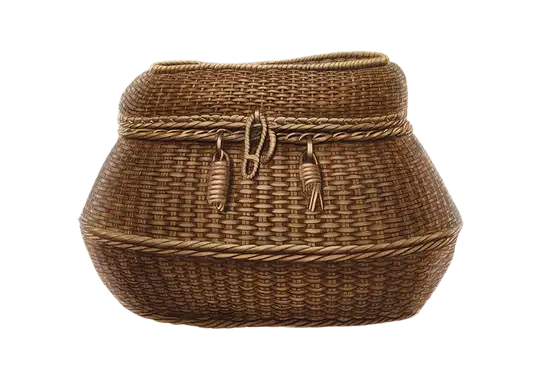In Southeast Turkey lies Gaziantep, a city that doesn't just excel in one area but proudly claims mastery in two distinct yet deeply connected realms: its world-renowned cuisine and its centuries-old tradition of handcrafted copperware. To visit Gaziantep, often simply called Antep, is to embark on a journey that delights both the sense of taste and the eye. It's a place where the sizzle of kebabs and the aroma of exotic spices mix with the rhythmic clang of hammers shaping gleaming metal, revealing a deep local pride in making things exceptionally well, whether for the table or for daily use. This unique dual identity has even earned it recognition as a UNESCO Creative City of Gastronomy.
We, Ola and Riza, arrived in Gaziantep with high expectations for its food. But we quickly discovered that its soul is equally expressed in the fiery forges and bustling workshops of its traditional artisans. This exploration delves into why Gaziantep isn't just a food capital, but a remarkable centre where exquisite taste and masterful craftsmanship ("taste and tin") are two sides of the same rich cultural coin.
A Symphony of Flavours: Gaziantep's Celebrated Cuisine
While many associate Gaziantep with its divine baklava (a sweet pastry made of layers of filo dough filled with chopped nuts and sweetened with syrup or honey) and world-class pistachios (Antep fıstığı, which are smaller, greener, and more flavourful than many other varieties), its culinary brilliance extends far beyond desserts. The savoury (not sweet) dishes of Gaziantep are a universe unto themselves, a complex and deeply satisfying cuisine shaped by its history as a cultural crossroads (as we've explored in our Trade Routes article), its fertile surrounding lands, and an unwavering commitment to quality ingredients.
The kebabs here are legendary, but they are far more varied than one might imagine. Consider Ali Nazik kebab: tender, smoked aubergine (eggplant) puréed with yogurt and garlic, topped with perfectly grilled, seasoned minced lamb or cubes of lamb. It’s a wonderful combination of smoky, creamy, and savoury flavours. Beyond kebabs, there are rich stews (güveç), intricately stuffed vegetables (dolma), and an astonishing array of mezzes (small appetizer dishes) that showcase fresh local produce, vibrant herbs, and distinctive spices like the local Antep pepper (a key ingredient in pastes like biber salçası – red pepper paste) and sumac.
The secret to GaziantEP's cuisine lies not just in complex recipes, but in an almost obsessive focus on the quality of its ingredients, often sourced from the surrounding region. The local pistachios, peppers, pomegranates (for molasses), olives, and herbs are considered among the best in Turkey, and cooks here understand how to let these flavours shine. This dedication to fresh, high-quality, local produce feels very connected to modern food movements like "farm-to-table," yet it's a tradition that has been practiced here for centuries.
The Ring of the Hammer: Gaziantep's Copperware Heritage
Just as the kitchens of Gaziantep are alive with flavour, its historic Bakırcılar Çarşısı (Coppersmiths' Bazaar) resonates with the sound of fire and metal. This is one of the oldest and most atmospheric parts of the city, a maze-like network of narrow streets lined with workshops where artisans practice the ancient craft of bakırcılık (copperworking). Here, generations of coppersmiths have hammered, shaped, and engraved copper into beautiful and functional objects, from ornate coffee pots (cezveler) and large cooking cauldrons (kazanlar) to decorative trays, bowls, and household items.
Walking through this bazaar is like stepping back in time. You see masters and their apprentices, often young boys learning the trade, working amidst the glow of small forges. Sheets of copper are heated, hammered into shape, and then often painstakingly hand-engraved with traditional motifs. The skill involved is immense, a testament to years of dedication. While cheaper, mass-produced kitchenware is now common everywhere, there's a renewed appreciation for these handcrafted copper pieces, both for their beauty and their excellent cooking properties (copper conducts heat very evenly). Owning a piece of Antep copperware is a mark of pride, connecting the owner to a long and distinguished tradition.
Twin Pillars of Identity: Why Food and Craft Thrive Together
It's fascinating to consider why Gaziantep has become such a powerhouse in both gastronomy (the art and science of good food and drink) and traditional craft. Perhaps it's the city's long history as a prosperous trading hub on the Silk Road, which brought not only wealth but also new ideas, ingredients, and techniques that enriched both its kitchens and its workshops. Perhaps it's a deep-seated cultural value placed on skill, patience, and the transformation of raw materials into something extraordinary, whether it's a perfect dish or a beautifully made copper pot.
There's an undeniable pride in Gaziantep regarding these twin pillars of its identity. This pride isn't just about looking back at the past; it's an active force. The city has invested in preserving and promoting its culinary heritage (leading to the UNESCO designation) and supports its traditional artisans. This commitment to quality and authenticity seems to be a core part of the city's character.
Gaziantep stands as a powerful example of a city that has not only preserved but actively celebrates its distinctive cultural heritage. Its world-class cuisine and its resilient tradition of copper craftsmanship are not separate things but deeply connected expressions of local pride, a commitment to excellence, and a history rich with exchange and innovation. To experience Gaziantep is to understand that "taste" and "tin" are more than just food and metal; they are the tangible soul of a city that has masterfully blended the riches of the earth with the skill of human hands for centuries.
.svg)




